- Home
- P. T. Deutermann
The Iceman Page 4
The Iceman Read online
Page 4
“Make my depth three hundred fifty, aye, sir,” the diving officer said. For this exercise, the exec had chosen Lieutenant Caldwell to be the diving officer.
The planesmen once again in concert manipulated the large brass wheels that sent servo signals to the fore and aft diving planes at either end of the ship. There was, however, no wild spinning of the wheels. Tiny increments, now, with the bow planesman watching the hands of the stern planesman to make sure they moved in synch. The diving officer ordered two hundred pounds of ballast water moved from one tank to another, and then reversed his order as the sub started to descend too fast.
“Passing three twenty,” the diving officer announced.
“Very well.”
“Passing three thirty.”
“Passing three forty.”
At this point the diving officer gave orders to flatten the dive by moving ballast water from fore to after tanks. The whine of the ballast pumps seemed unusually loud in the tense control room.
“Steady at three hundred fifty,” the diving officer said, although his voice gave Malachi some doubts about whether the diving officer was all that steady just now. The hull noises were no louder than before, but there seemed to be a lot more metal protesting.
“Very well,” Malachi said. He told the executive officer to query the chiefs stationed throughout the boat if there were any leaks. Then he waited for a full two minutes before ordering a course change. As the sub banked slightly to make the turn, the hull made more urgent noises, small clanks, ticks, and even animal-like sounds as the welded joints in the sub’s plated hull protested the increasingly aggressive pressure from without. Malachi glanced over at the water temperature gauge and was interested to see that the temperature had changed ten degrees colder from 300 feet. A deep layer, he thought. Need to remember that.
The course change was uneventful this time, as the diving officer did a better job of ballast control. The two planesmen had finally realized that if they adjusted their planes more carefully, the boat wouldn’t depart from ordered depth when changing course.
“We’re flying, gentlemen,” Malachi observed. “If we’re going to maintain depth control, we need to bank a little, just like an airplane. Air is a fluid, too. Mister Caldwell, are we stable at three fifty?”
“Yes, sir,” Caldwell replied. Malachi could almost hear the unspoken “are we there yet, Dad” in Caldwell’s voice.
“Keep her so,” Malachi said. “XO—leak reports?”
“None so far, Captain,” the exec said. He was wearing a set of sound-powered telephones and talking to the chiefs stationed throughout the boat.
“Very well. Diving officer, make your depth four hundred feet.”
This time there were some audible intakes of breath in the control room. They were already 50 feet past the boat’s official test depth. The temperature in the control room rose even more. As the hull deformed, it compressed the air in the boat. They were definitely in the dangerous part of the boat’s performance envelope. They were headed 100 feet below test depth, the depth at which the builder guaranteed the hull would hold together. Past that, they were descending into an environment where the words should and would applied, and, as everyone knew, the builder was not along for the ride just now.
Malachi knew that the term on everyone’s mind right now was crush depth. That number was an estimate, but every submariner knew exactly what it meant: the depth at which the hull simply could not withstand the pressure, measured in hundreds of pounds per square inch, and collapsed, changing shape in a single white hot instant from a circular hull into a flat steel billet and then dropping like a dull blade into the abyss, with every living thing onboard long since vaporized.
As the diving officer began the descent, the XO suddenly grabbed his earphones. “Sterntube seal on the port shaft is blowing green,” he announced.
“Mark your depth,” Malachi said calmly.
“Three sixty,” the diving officer said. His voice was up an octave.
“Hold at three sixty,” Malachi ordered. “XO, what are they doing about it?”
“Lining up drain pumps to the port shaft alley. Jimmy says they can hold the flooding, but just barely.”
“Jimmy being?” Malachi asked, as if they were talking about the laundry schedule.
“The chief engineer, Captain,” Marty said, swallowing again, his eyes wide.
There was a loud, metallic snapping noise from somewhere outside the control room. Everyone except Malachi jumped, but nothing else happened.
“Let me know when they have it under control,” Malachi said. “In the meantime, Mister Caldwell, maintain ordered depth and get ready for a course change.”
“Now, sir?” the diving officer said, his fear overcoming his training to respect and obey any order given by Malachi.
“Especially now, Mister Caldwell,” Malachi said. “This is where we’re going to hide when the going gets tough, and it will get tough. Look around: we’re all warm and dry. Think four Jap destroyers topside looking for us, and not finding us because we’re underneath a thermocline layer. They’ll be dropping depth charges here and there to show their boss they’re sincere, but setting them for two hundred fifty feet, three hundred at most. Noisy, but not effective. Maintain ordered depth. Conning officer, come to course two two zero with standard rudder.”
The conning officer had trouble finding his voice, but then relayed the order to the helmsman, who, apparently made of sterner stuff, acknowledged the order and put the rudder over fifteen degrees. The last course changes had been made slowly, carefully, as if the helmsman knew how delicate the sub’s attitude was at these depths. There was a depth gauge in the conning tower, too, so the four men up there were all too aware of where the boat was operating. Almost immediately, the bow began to settle as the sub banked slightly into the turn. The diving officer was not reacting.
“Trim, Mister Caldwell,” Malachi said sharply. “Right now. Your pumps can only move water fore and aft at this depth. You can’t quickly dump any weight.”
The diving officer froze up, and then did as he had been trained. “I’ve lost the bubble, Captain,” he announced. For all his training and qualification, he didn’t know what to do, and the fact that the depth gauge needle was just about to pass 400 feet wasn’t helping. As if to scare him even more, the port shaft began to make a screeching noise as its seals came under even more pressure.
Malachi stepped in at once. “Blow negative for thirty seconds,” he ordered. “Forward planes, up ten degrees. After planes, neutral.”
The planesmen acknowledged in unison. The negative tank was a large ballast water tank just forward of the control room. If you were on the surface and had to get down fast, you flooded the negative tank and the sudden addition of tons of seawater weight would drag the bow under in a big hurry.
Nothing happened for another thirty seconds. At just past 400 feet, the compressed air that was attempting to push ballast water out of the negative tank was contending with 175 pounds per square inch depth pressure. As it expanded from the ballast air storage tanks, it cooled, threatening to ice up the external ballast nozzles unless they got upstairs quickly.
“Full power,” Malachi ordered. The big DC motors aft responded at once, making the entire sub tremble and doubling the volume of that squealing port shaft. The squealing was annoying, Malachi thought, but it had the benefit of obscuring the creaking and cracking noises coming from the hull at 400 feet. He smiled to himself. Some of the crewmen saw that smile, giving birth to a rumor that the only time you’d see Malachi Stormes smiling was while approaching crush depth.
The boat responded to full power even as the batteries dumped amps like a waterfall. Fortunately there were no Japanese destroyers waiting topside, so they should be able to recharge. Should. Would.
“Diving officer, you got it?” Malachi asked, calmly. The boat was driving upwards at a ten-degree up-bubble, passing through 300 feet and gathering speed as she shed fathoms. Caldwell
obviously wanted to say yes, but it was equally clear to everyone watching that he absolutely did not have it. The shaft wasn’t squealing so much now, and everyone could almost feel the hull relaxing.
“Make your depth one hundred feet,” Malachi ordered. “Maintain three knots. Secure the blow. XO?”
“I have it,” the exec announced, and then began giving orders to slow the rate of ascent and trim the boat back to something more like a normal angle of attack as they headed up. Malachi went to the coffeepot and fixed some of the sugar-laced asphalt that passed for coffee in the submarine world. Then he started forward, toward his tiny cabin.
“Take her up to periscope depth and take a good long look, XO. Then we’ll surface, trim down to decks awash, head northeast along the track at speed five. I want no wake. Secure from GQ and post four lookouts. Charge the battery for two hours, three if it’s still all clear, and then we’ll begin diving drills.”
“Once we’re up, do you want the radar continuous, Captain?”
Malachi had forgotten about the radar. Firefish had the new SJ radar set, which included a planned position indicator scope up in the conning tower. She also carried an air search radar, something he’d never seen before in a boat. This was a tactical luxury. “Occasional sweep,” he replied. “Remember, Intel warns that the Japs can theoretically detect that thing twice as far away as we can detect a target. Don’t turn it into a homing beacon.”
“Aye, sir, I understand. Will you come topside?”
“No, XO,” Malachi said, deliberately yawning, as if their excursion to the lightless realm of 400 feet had been a bit boring. “I’m going to take a nap. Call me when they get that seal repaired.”
FIVE
Firefish arrived at the northern end of the Solomon Islands chain ten days after departing Perth, obtained a good radar fix on the channel between Buka Island and Bougainville Island, and then submerged to wait out the day, mindful of the large Japanese naval anchorage at Rabaul nearby. Marty Brandquist was already exhausted. The new skipper had drilled the crew and the boat like she had never drilled before. Standard dives, crash dives, deep dives, normal surface, emergency surface, partially submerged but still on the surface, gunnery drills, tracking drills, torpedo load and reload drills, engineering casualty drills, torpedo evasion, periscope celestial navigation, and a host of smaller evolutions. The drills had gone day and night, with the crew getting meals when they could or when there was enough surface air coming in to allow cooking. One night they sent divers over the side to repack that noisy stern seal, and then went down that night to 350 feet to see if the repair worked, as if going past test depth was nothing more than a routine maintenance procedure. Marty and the COB were having a coffee back in the after torpedo room.
“Does this guy ever sleep?” Marty asked rhetorically. The compartment was dimmed to allow the off-watch torpedomen to sleep underneath their two-ton torpedoes, with just a canvas curtain to give them some privacy.
“Had one like this back in the S-twelve boat,” the COB said quietly. The two torpedomen playing cards up by the actual tubes were pretending not to eavesdrop. “Needed sleep but just couldn’t manage it when we were out operating. Went Section Eight; XO had to take command and get him back to the base.”
“I’m beginning to believe this one doesn’t need any in the first place. Takes naps. Dozes in the conning tower when he can, but then he’ll wake up and order the scope up, as if something had woke him up. My ass is dragging.”
The COB grinned. As the chief of the boat, he was informally responsible for overseeing all the enlisted men aboard. Marty was the executive officer—second in command—formally responsible for the entire boat and its crew and senior to everybody except that all important officer, the Captain. The COB thought he had the better deal. “Be interesting to see what he does when a Jap comes along,” he observed. “Much as I liked the guy, Old Man Montgomery would probably go hide.”
“Those days are well and truly over, COB,” Marty said. “We’ll probably go and ram the bastard.”
They both chuckled, and then the GQ alarm sounded. Marty made tracks for the conning tower, while the COB headed for the control room. By the time Marty got on station in the conning tower, the boat had been buttoned up and all stations were manned and ready. He had to admit, that happened in half the time it used to. Malachi was already manning the periscope, hunched over to keep the mast just above the water topside, and calling for Doppler readings on the sonar. Besides Malachi, there was the GQ officer of the deck, the fire-control officer, who ran the torpedo data converter, or TDC, a sonarman, a radar man, a helmsman, the torpedo-firing-panel operator, two plotters for the dead-reckoning tracer table, and the exec. Marty did not have any specific duties, other than to take care of anything that needed attention, either there or one deck down in the control room.
“What’ve we got?” he asked of no one in particular.
“A maru, a freighter, bearing one eight zero,” Malachi replied, still staring through the periscope optics. “Maybe six, seven thousand tons, one escort, probably a DE. They’re zigzagging, too. Base course seems to be northeast and coming our way, though, maybe eight thousand yards out now. Down scope. Make your depth two fifty. Come to course zero four zero.”
“Make my depth two hundred fifty feet, aye, sir,” the OOD replied. “Course zero four zero.”
The term maru meant that the target was not a warship but rather a cargo ship or an oil tanker, all of whose names ended in the term maru. Malachi looked around the scope housing at Marty. “I plan to go down and let them run over on top of us. As soon as there’s a Doppler shift I’ll come back to scope depth and shoot both of them.” He glanced over at the plotting table. “I need your best estimate of their base course, please.”
The plotters huddling over the DRT table nodded but stayed focused on their developing track. The sonarman was feeding them continuous bearings to the target’s propeller noises. The moment the two Japanese ships passed over them, the bearing would shift one hundred eighty degrees, which would be the signal to come back up and set up for the shot. Marty watched as the pencil marks went down onto the white tracing paper, a series of straight lines running almost parallel to one another, since all they had were bearings.
“Conn: I recommend coming left to course three three zero to resolve bearing ambiguity,” Marty said.
Malachi thought for a few seconds. “I’ll lose too much ground at three three zero,” he said. “Make it due north.”
The helmsman, who’d been listening, immediately announced that he was coming to course zero zero zero.
Then they waited. After a while they began to hear screwbeats, light ones from the escorting destroyer and heavier, slower beats from the much larger cargo ship. Mixed in with the propeller sounds was the occasional ping from the destroyer’s sonar. Marty knew they were taking a chance with this approach: if the destroyer happened to pick them up, he wouldn’t have to maneuver. He’d only have to roll depth charges to remove the submarine threat. “Do we have a layer?” he asked Sonar.
“Yes, sir, XO,” the sonarman said. “Good layer at two twenty. Seven-degree differential.”
Great, Marty thought. Sometimes the ocean would settle itself into layers of water that had different salinity and temperatures. The sound waves pinging out of a sonar transmitter would be refracted by the boundary between the two layers, thus masking the presence of the submarine. Marty glanced over at Malachi, who gave him a “I’m way ahead of you, Bub” look.
They waited some more as they listened for the Doppler shift. Like the rising pitch of a train’s whistle approaching and then declining as it went away, the pitch of the screwbeats rose and then fell as the ships approached and then passed overhead.
“Down-Doppler,” the sonarman reported. “Bearing now zero five five.”
“Make your depth one hundred feet. Speed five. Helmsman come to zero five five.”
The rumble of compressed air driving water out of the
ballast tanks drowned out the sound of the screwbeats. The boat assumed an up-angle as she rose from the depths of the ocean to 100 feet. The sub was now behind both the main target and the escort, which meant that the escort destroyer couldn’t hear any sounds made by the sub because of her own propeller noises. When the boat reached 100 feet, Malachi then ordered periscope depth, which was 60 feet. It took another two minutes to level off and stabilize the boat, after which Malachi ran the scope up.
“Stand by for setup,” he called. “Target bearing is—mark.”
“Zero five six,” Marty announced. His job was to stand on the opposite side of the periscope to read off the bearing of whatever Malachi was looking at.
“Range is nine hundred yards and opening,” Malachi said, and then raised the periscope handles to lower the mast. “Here’s what I want: four fish, spread of two degrees, speed high, depth ten feet, contact exploder.”
The TDC officer repeated the instructions and then fed the inputs into the computer.
“Open all outer doors forward,” Malachi ordered. “Make ready tubes one through four. Up scope.”
He stared into the eyepiece. The sunlight refracting down the optical tube framed his eyes in bright circles. “Bearing is—mark!”
“Zero five eight,” Marty said.
“Agrees with TDC track,” the fire-control officer said. That meant that the computer’s predicted track agreed with Malachi’s observed bearing, which in turn meant that the torpedo guidance systems were getting the correct instructions.
“Fire one,” Malachi ordered. They felt the thump of the torpedo leaving its tube. Malachi fired the other three fish at ten-second intervals, took one last look all around to make sure there wasn’t a second escort sneaking up on them, and then pulled the scope down.

 The Nugget
The Nugget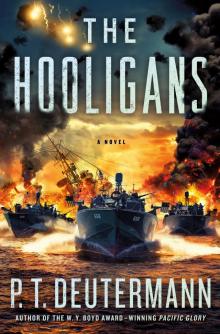 The Hooligans
The Hooligans SPIDER MOUNTAIN
SPIDER MOUNTAIN![Cold Frame [retail] Read online](http://i1.bookreadfree.com/i/03/19/cold_frame_retail_preview.jpg) Cold Frame [retail]
Cold Frame [retail] Sweepers
Sweepers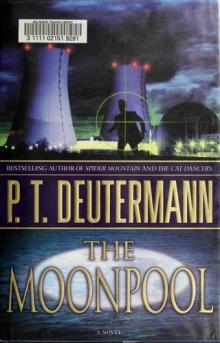 Cam - 03 - The Moonpool
Cam - 03 - The Moonpool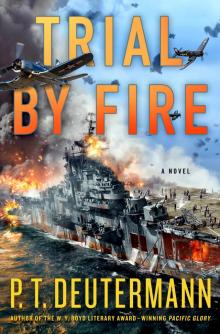 Trial by Fire
Trial by Fire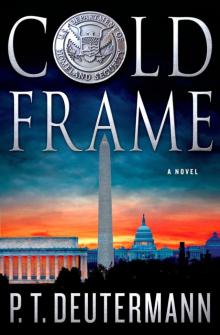 Cold Frame
Cold Frame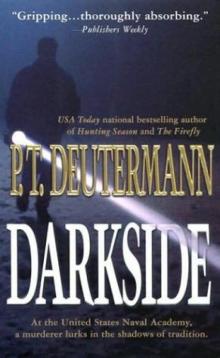 Darkside
Darkside Cam - 04 - Nightwalkers
Cam - 04 - Nightwalkers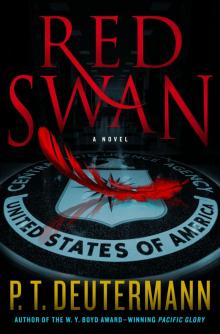 Red Swan
Red Swan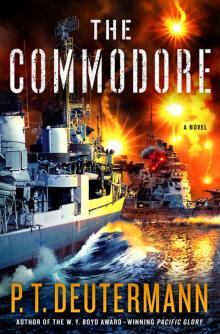 The Commodore
The Commodore Hunting Season
Hunting Season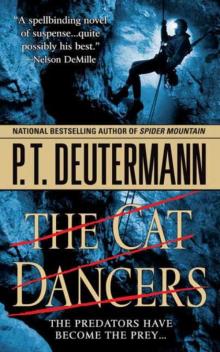 The Cat Dancers
The Cat Dancers Scorpion in the Sea
Scorpion in the Sea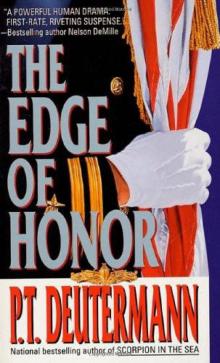 The Edge of Honor
The Edge of Honor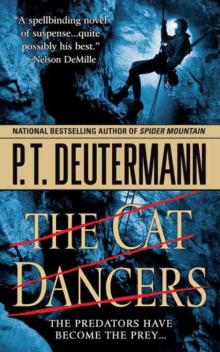 The Cat Dancers cr-1
The Cat Dancers cr-1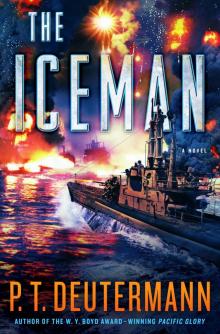 The Iceman
The Iceman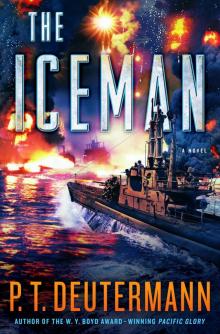 The Iceman_A Novel
The Iceman_A Novel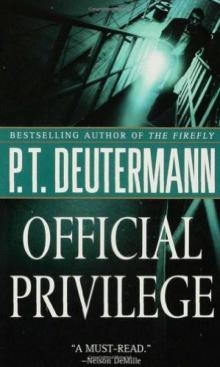 Official Privilege
Official Privilege Sentinels of Fire
Sentinels of Fire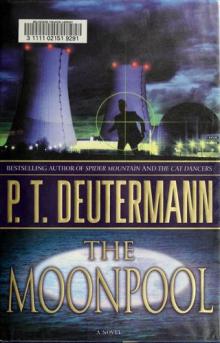 The Moonpool cr-3
The Moonpool cr-3 Nightwalkers cr-4
Nightwalkers cr-4 The Firefly
The Firefly Spider mountain cr-2
Spider mountain cr-2 Pacific Glory
Pacific Glory The Last Man
The Last Man